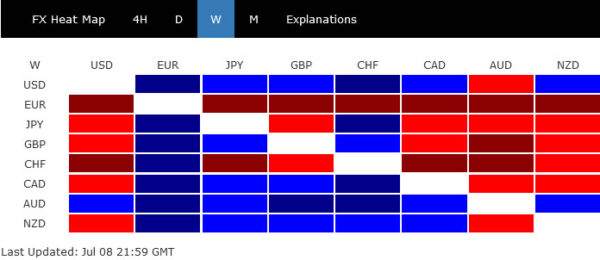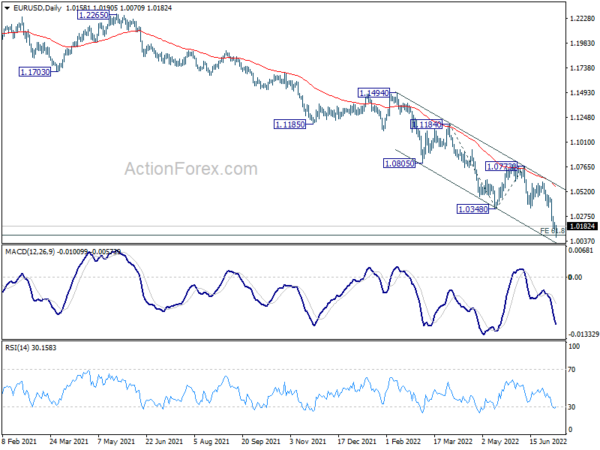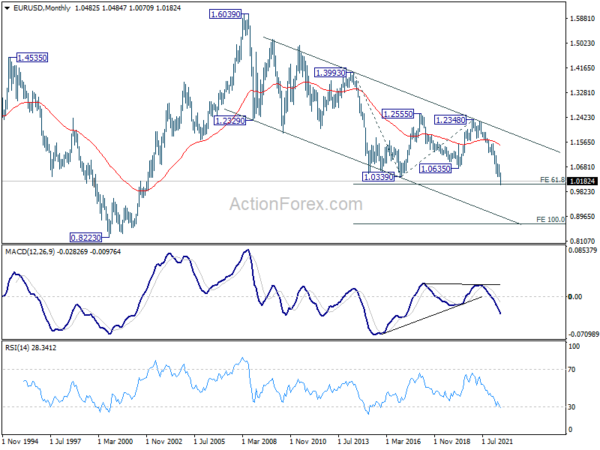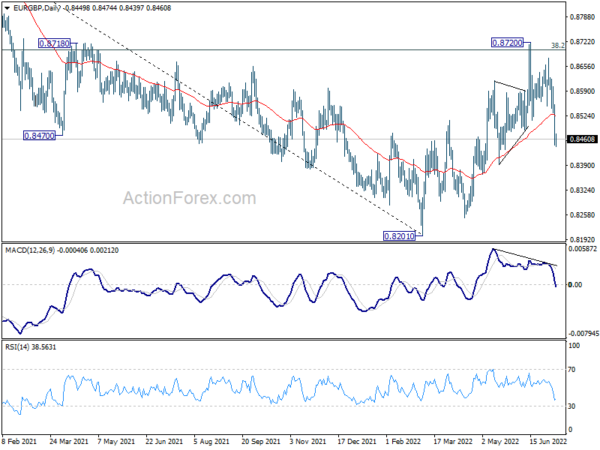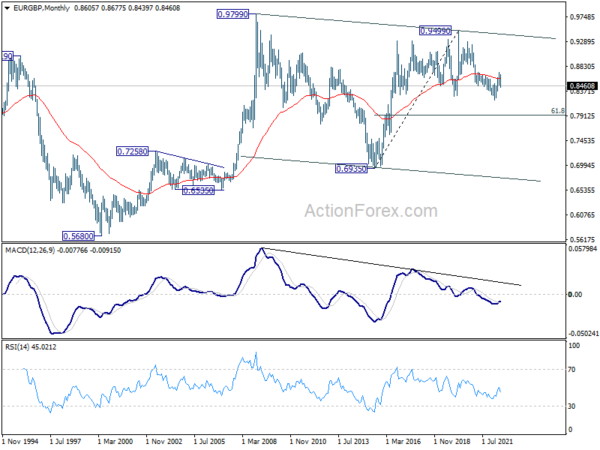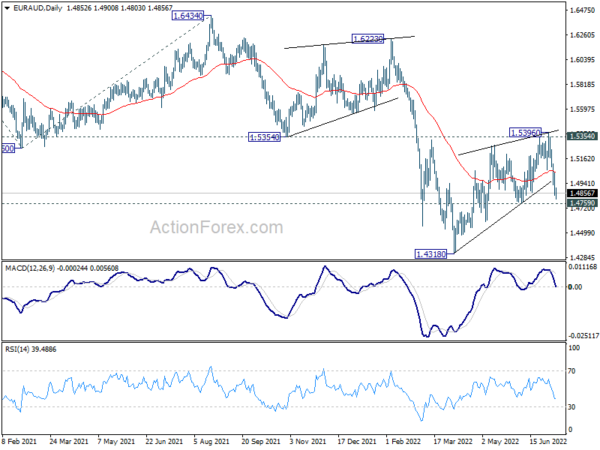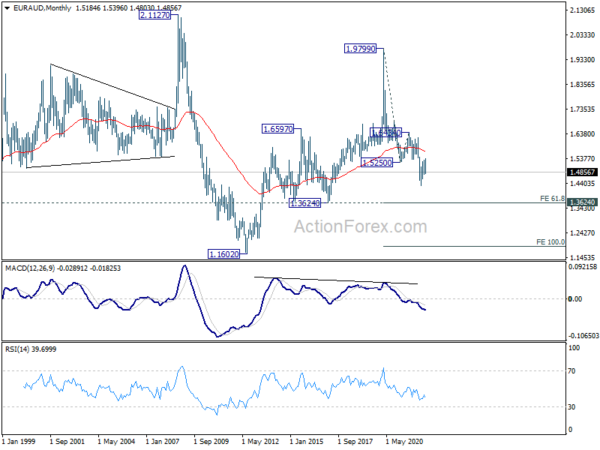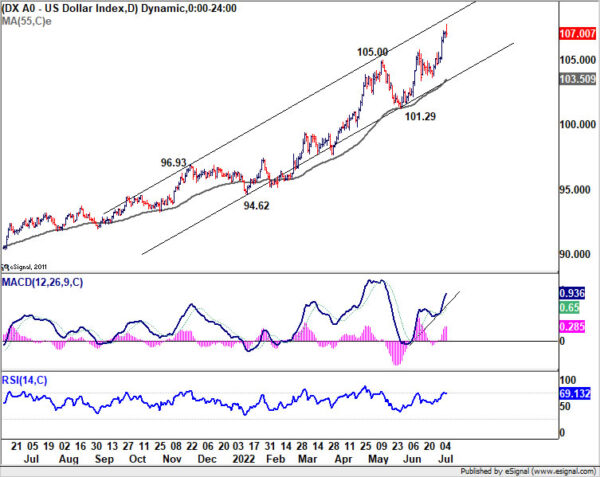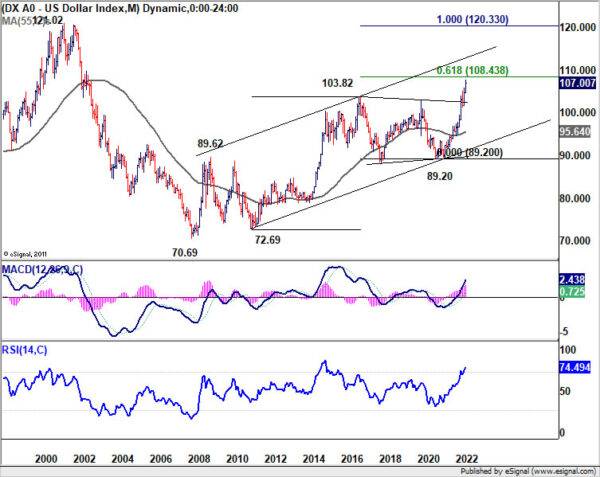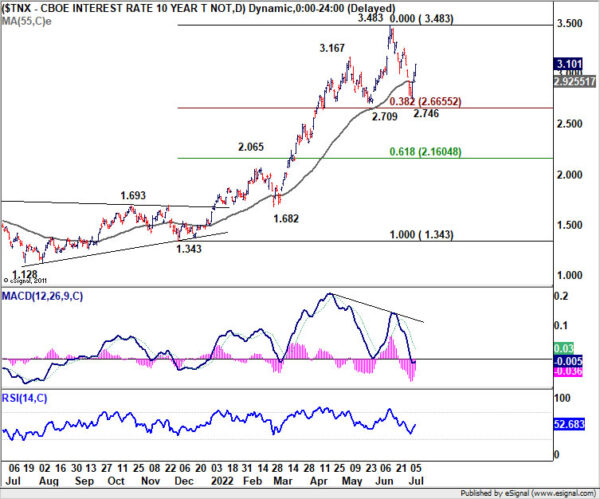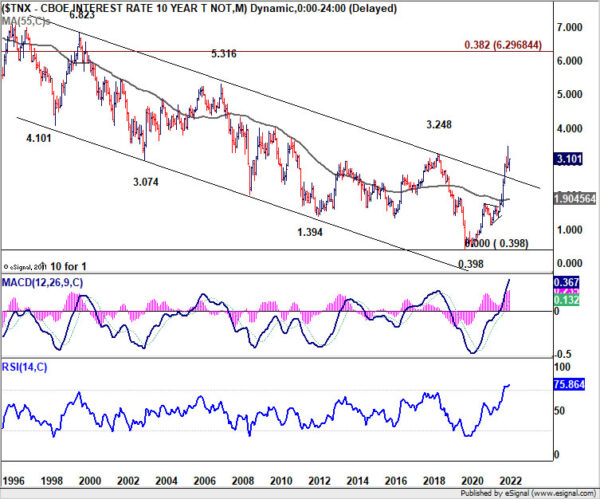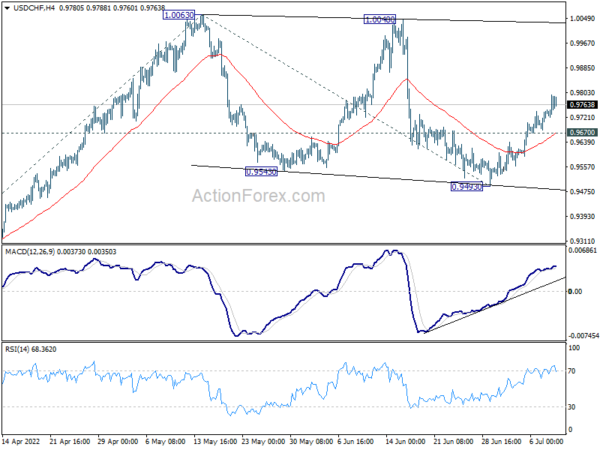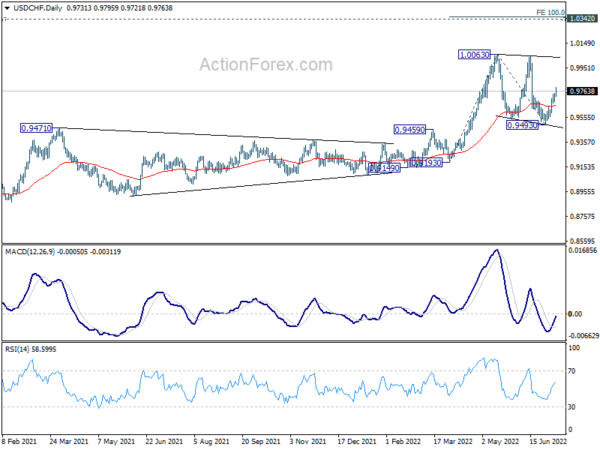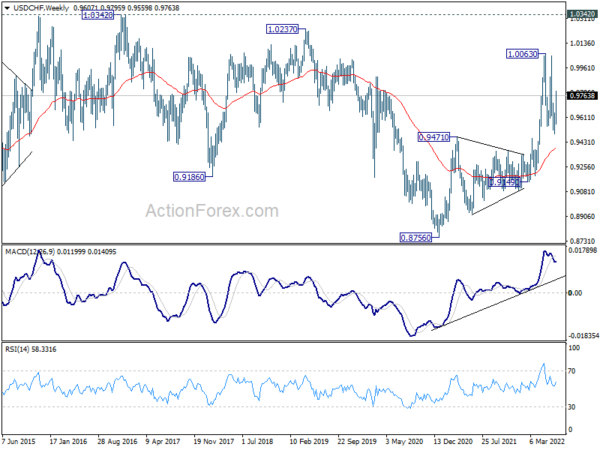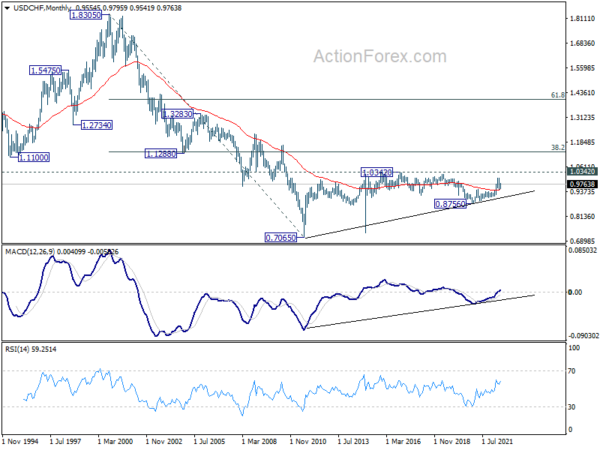Euro ended as the worst performer last week on increasing worries of a deeper and longer recession. Selloff in the common currency also dragged down Swiss Franc, which ended as the second worst.
Sterling was originally pressured by stabilized after UK Prime Minister Boris Johnson announced to step down after another scandal. But Yen was even weaker because of rebound in US benchmark yield. The tragic death of former Japanese Prime Minister Shinzo Abe was mourned, but hasn’t affected the markets.
On the other hand, Dollar surged around the broad, with help from solid economic data. But Aussie was slightly stronger while Kiwi was not too far away. Canadian Dollar ended mixed.
Euro in broad based selloff, EUR/USD approaches parity
Euro’s broad-based decline resumed last week and and marched towards parity against Dollar. The trigger was the renewed selloff was gas and energy crisis on the prolonged invasion of Russia to Ukraine. Europe is facing the risk of longer and deeper recession than other major economies.
The gloomy outlook is tieing up ECB’s hand on monetary policy normalization to combat inflation. ECB is clear that it will hike by 25bps this month. But by the end of July, Fed should have delivered another 75bps, bringing interest rate to 2.25-2.50%, comparing to 0-0.25% at the start of the year. Other major central banks, even SNB and with the exception of BoJ, have already started their tightening cycle.
At the same time, Eurozone is facing risk of broadening fragmentation. Borrowing costs of more indebted Eurozone states could risk spiraling out of control, because of ECB’s tightening. There is no detail regarding ECB’s anti-fragmentation tools. Before these tools are proven effect, room for swift normalization of ECB policy would remain limited.
EUR/USD’s long term down trend from 1.6039 (2008 high) finally resumed by breaking through 1.0339 (2017 low). Initial target of 61.8% projection of 1.3993 to 1.0339 from 1.2348 at 1.0090 was already met. There might be some support from this level to bring rebound. But, from a medium term point of view, firm break of 1.773 resistance is needed to be the first sign of bottoming. Otherwise, risk will stay heavily on the downside. Sustained trading below 1.0090 and parity could bring further downside acceleration towards 100% projection at 0.8694.
EUR/GBP’s steep decline last week argues that rebound from 0.8201 has completed at 0.8720. The rejection by 38.2% retracement of 0.9499 to 0.8201 at 0.8697 maintains medium term bearishness. This is supported by the corrective structure of the price actions from 0.8201, and probably the rejection by 55 month EMA too. Risk will now stay on the downside as long as 0.8720 resistance holds. Firm break of 0.8201 will target 61.8% retracement of 0.6935 to 0.9499 at 0.7917, either as correction to rise from 0.6935 (2015 low), or as the third leg of the pattern from 0.9799 (2009 high).
Similar to EUR/GBP, EUR/AUD’s corrective rebound from 1.4318 could have completed at 1.5396, after rejection by 1.5354 support turned resistance. Break of 1.4759 support will further affirm this bearish case. When that happens, EUR/AUD should be ready to resume the down trend from 1.9799 (2020 high), towards 61.8% projection of 1.9799 to 1.5250 from 1.6434 at 1.3623, which is close to 1.3624 long term support (2017 low).
Dollar index extends up trend, 108.43 may cap upside
Dollar index’s up trend also resumed last week and hit as high as 107.78. It’s now facing an important long term projection level, at 61.8% projection of 72.69 to 103.82 from 89.20 at 108.43. There might be some strong resistance from this level to limit upside at first attempt. But outlook will stay bullish as long as 101.29 support holds. To power through 108.43, Dollar would need extra help from rise in treasury yields and extended risk-off sentiment. That might not happen for the near term yet. Though, firm break of 108.43, which would be accompanied by sustained break of parity in EUR/USD, would set the stage for 100% projection at 120.33, which is close to 121.02 (2001 high).
10-year yield to extend sideway consolidation
As for 10-year yield, it rebounded strongly, after dipping to 2.746 last week. The first leg of the consolidation pattern from 3.483 should be completed and further rally is mildly in favor for the near term. But upside should be limited by 3.483 to bring another decline. Nevertheless, even in this case, downside should be contained by 2.709, which is close to 38.2% retracement of 1.343 to 3.483 at 2.665. Up trend resumption should happen at a later stage.
USD/CHF Weekly Outlook
USD/CHF’s rebound from 0.9493 extended higher last week. The development argues that consolidation pattern from 1.0063 high has completed with three waves down to 0.9493 already. Initial bias stays on the upside this week for retesting 1.0063 first. Decisive break there will resume larger up trend. On the downside, break of 0.9670 minor support will dampen this bullish view and turn intraday bias neutral first.
In the bigger picture, medium term up trend from 0.8756 (2021 low) is still in progress. Next target is 1.0342 (2016 high). Sustained break there will resume long term up trend from 0.7065 (2011 low). This will remain the favored case as long as 0.9471 resistance turned support holds.
In the long term picture, current development argues that the correction from 1.0342 (2016 high) has completed at 0.8756 (2020 low) already. Rise from 0.7065 (2011 low) might be ready to resume. Firm break of 1.0342 will confirm and target 38.2% retracement of 1.8305 (2000 high) to 0.7065 at 1.1359.




